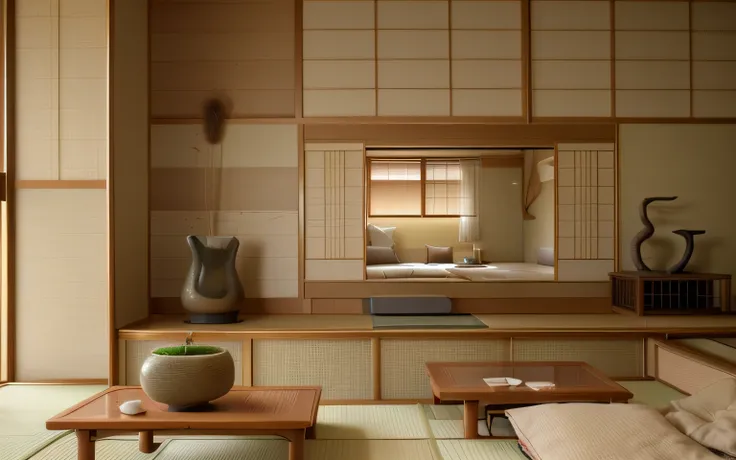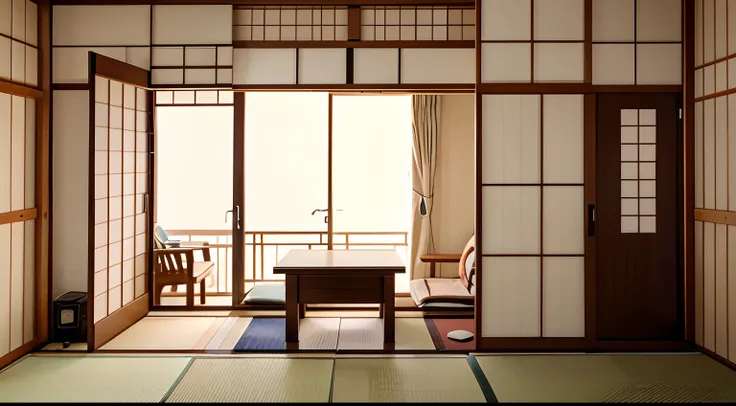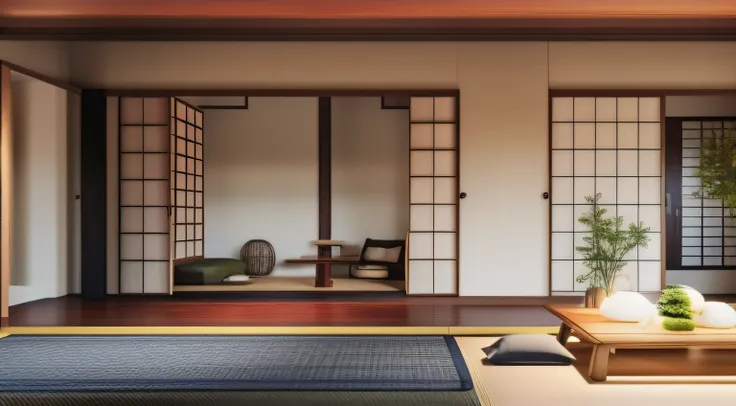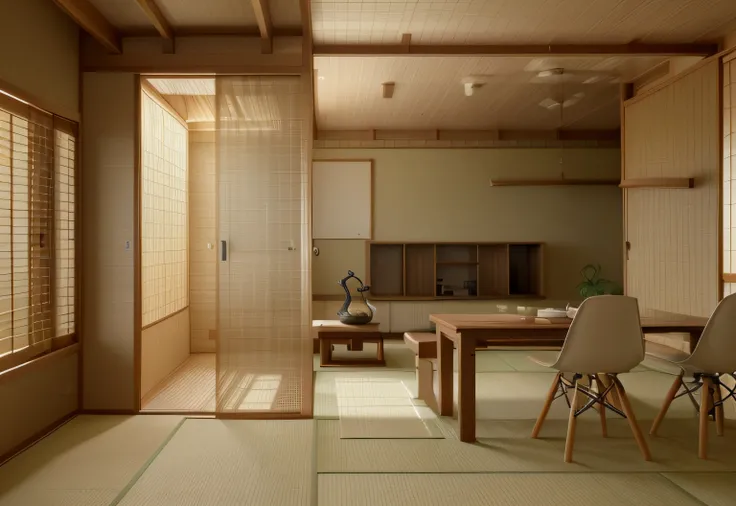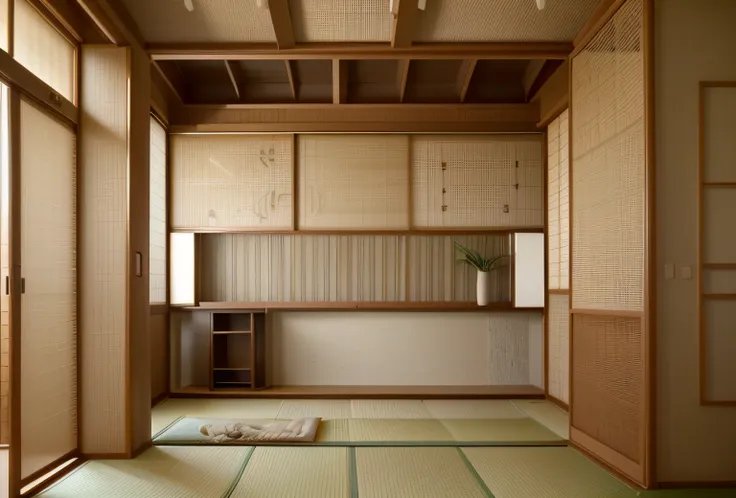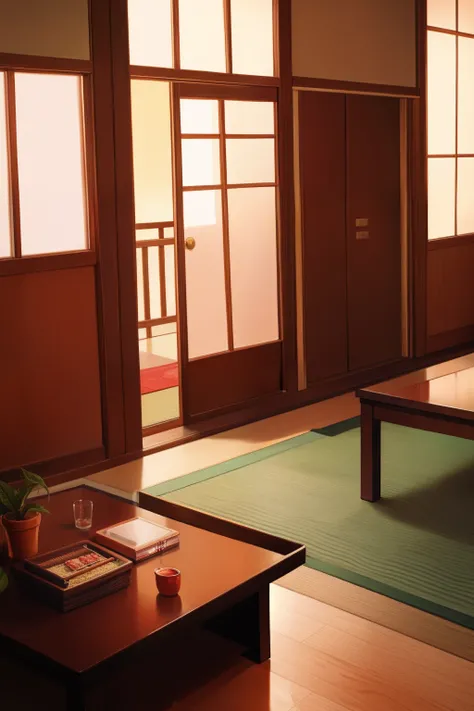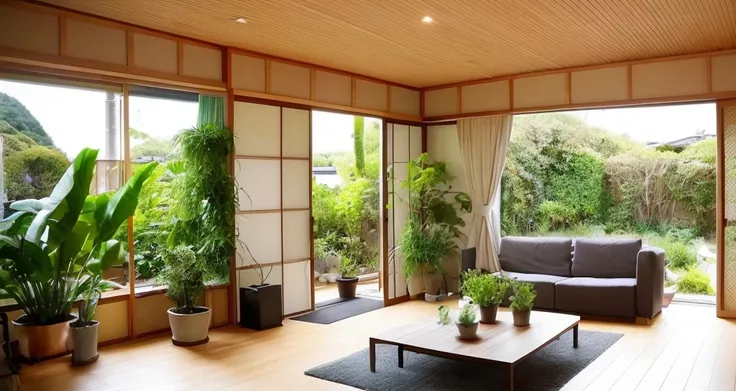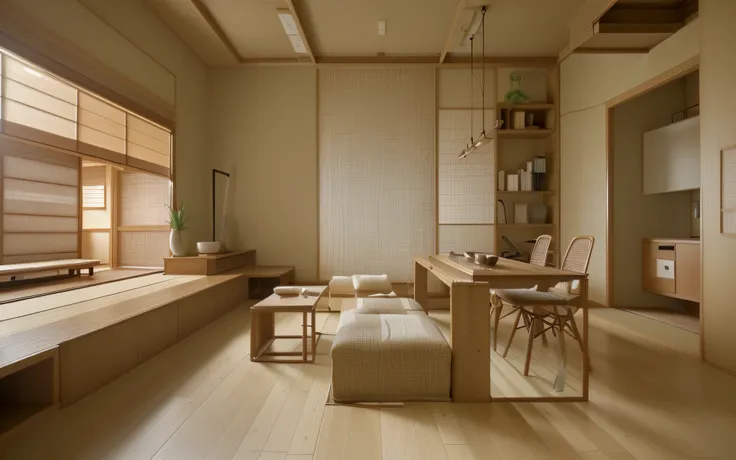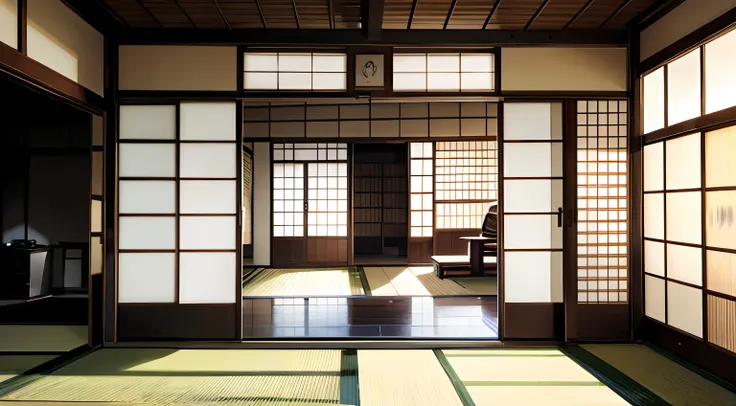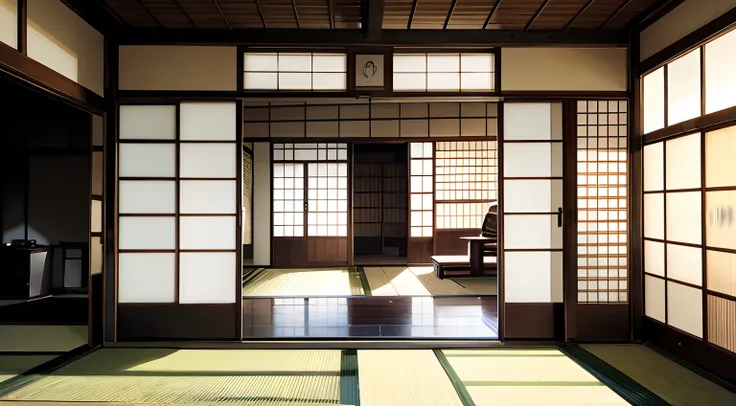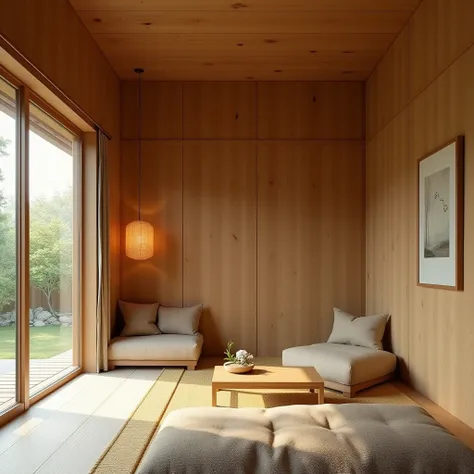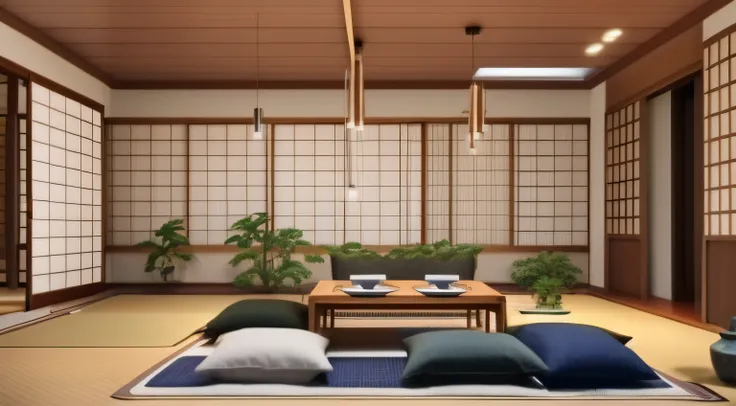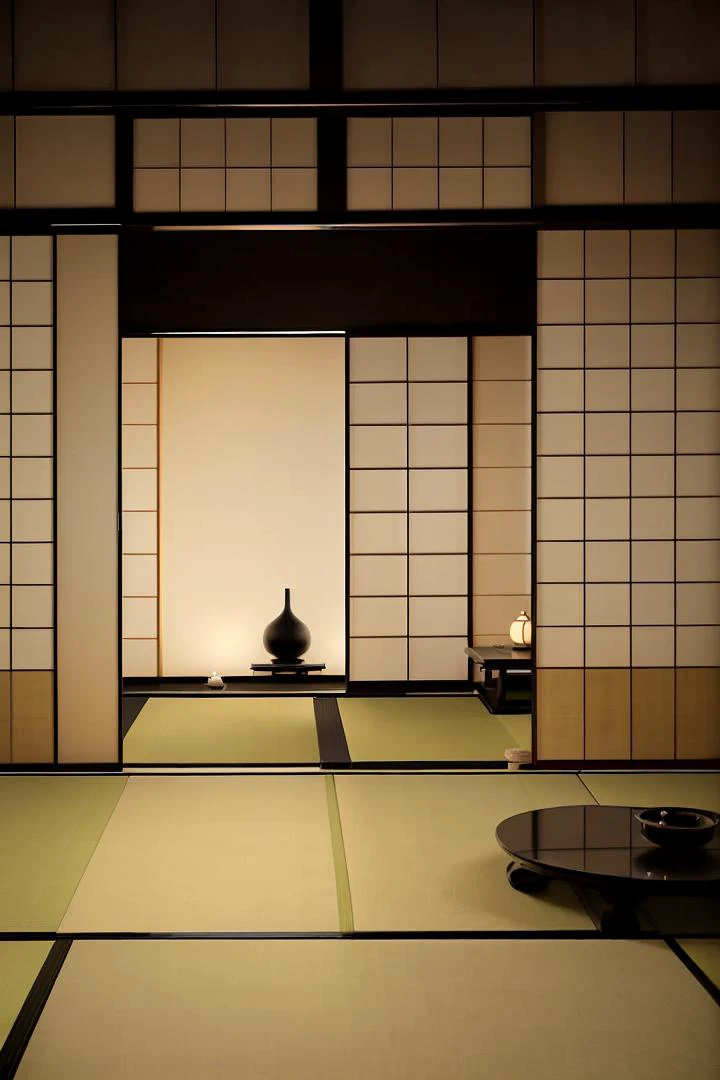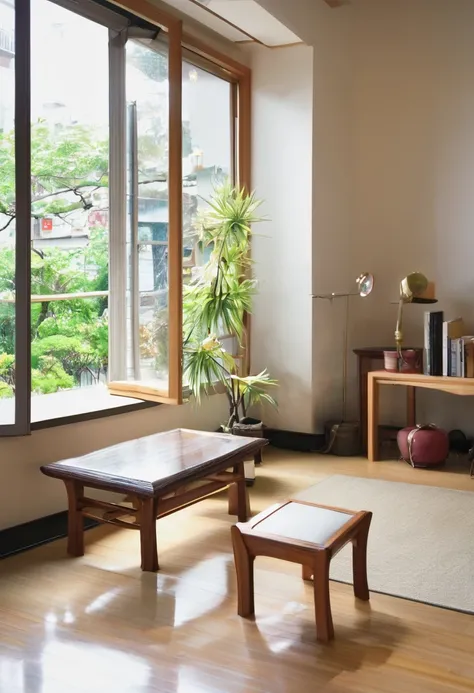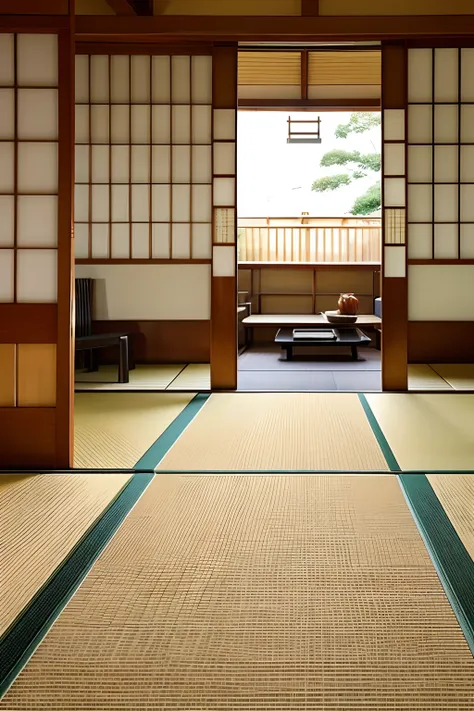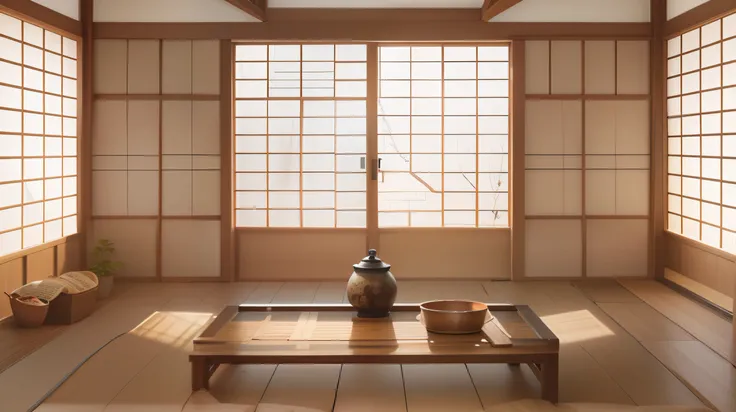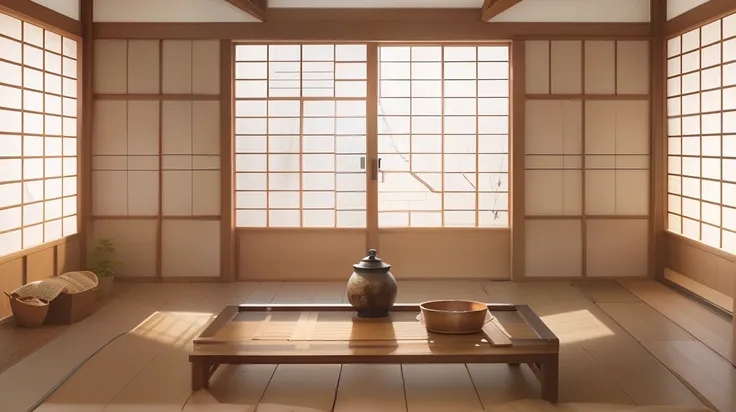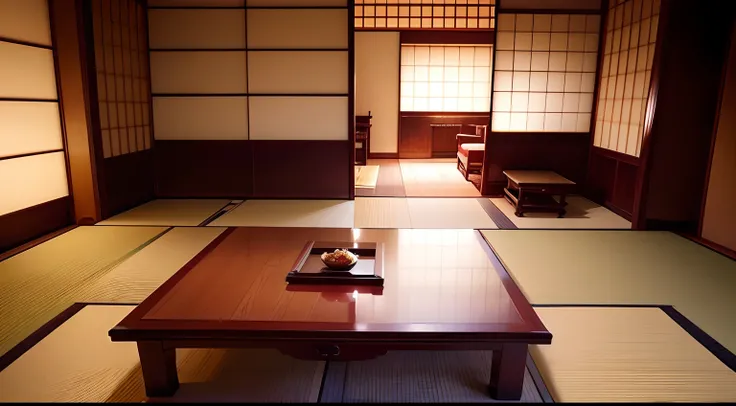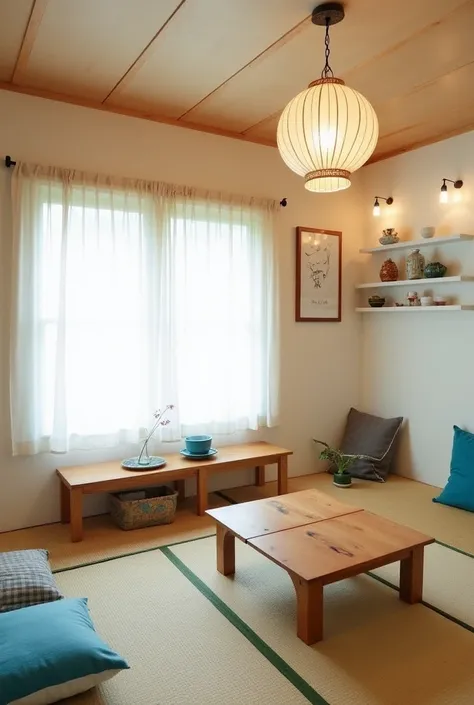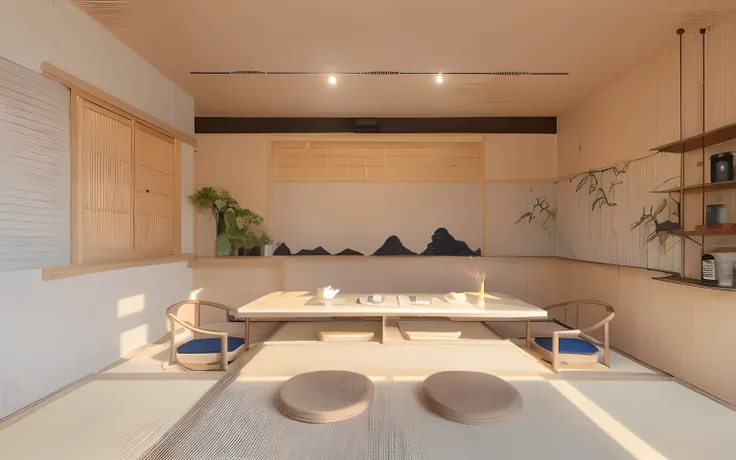There is a room with a couch
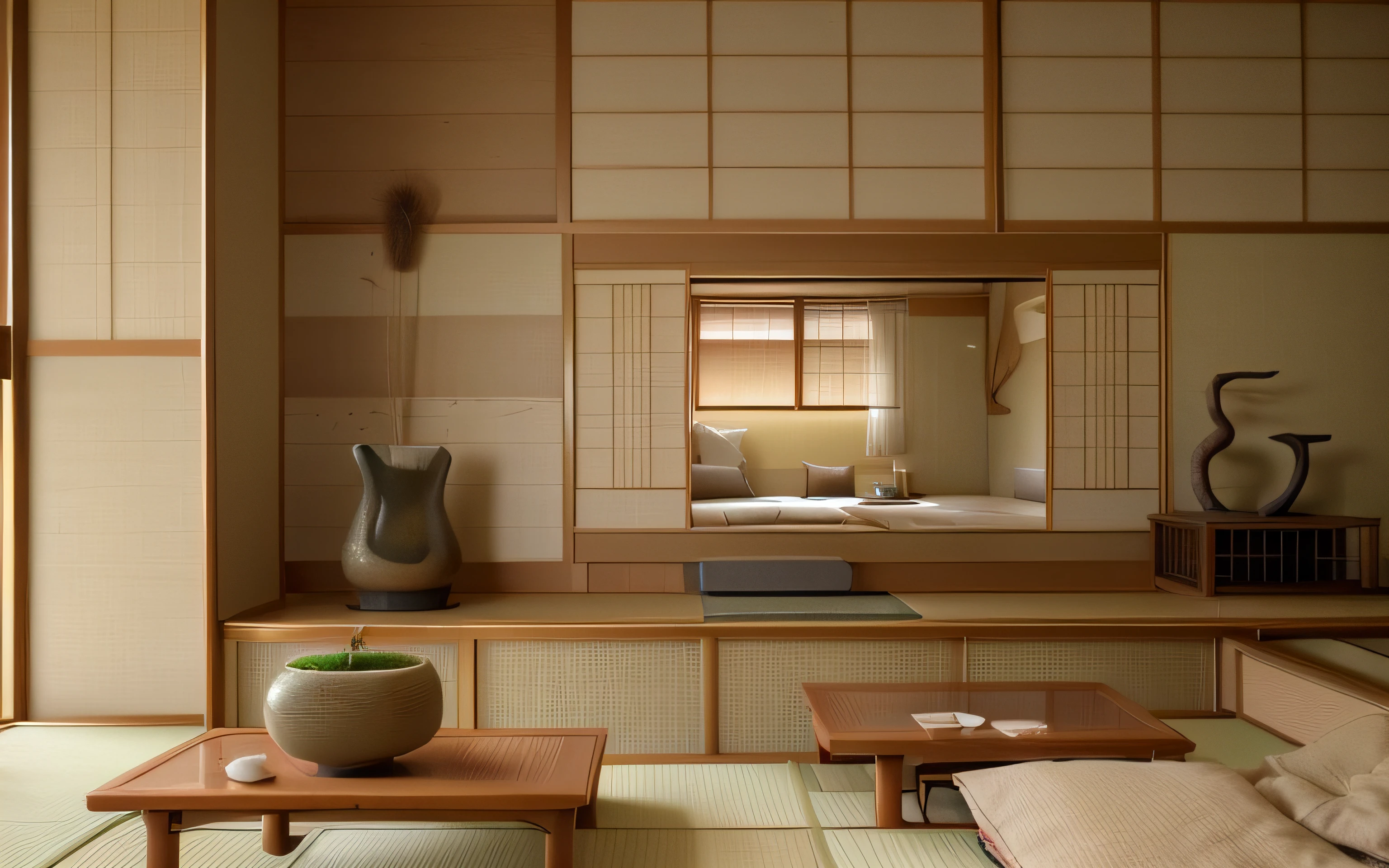

Minimalism: Japanese interiors are known for their simplicity. Clutter is minimized, and only essential items are prominently displayed. Natural Materials: Japanese design often incorporates natural materials such as wood, bamboo, rice paper, and stone. These materials create a strong connection to the environment. Neutral Color Palette: Neutral and muted colors like white, beige, and soft grays dominate the color scheme, creating a serene and tranquil atmosphere. Shoji Screens: Sliding paper screens, known as Shoji, are used to divide spaces and filter light, adding a sense of privacy and elegance. Fusuma: These are sliding panels covered in elaborately designed fabrics. They are used to create versatile and visually appealing room divisions. Tatami Flooring: Traditional Japanese straw mats called tatami cover the floor, offering a comfortable and natural flooring option. Zen Aesthetics: Zen principles, emphasizing simplicity and tranquility, play a significant role in Japanese interior design. Bonsai and Ikebana: Miniature trees (bonsai) and elegant flower arrangements (ikebana) are often used as decor, adding a touch of nature indoors. Wabi-Sabi: This concept celebrates imperfection, appreciating the beauty in natural wear and aging, which is reflected in the design elements.
プロンプト
プロンプトをコピー
Minimalism: Japanese interiors are known for their simplicity
.
Clutter is minimized
,
and only essential items are prominently displayed
.
Natural Materials: Japanese design often incorporates natural materials such as wood
,
bamboo
,
rice paper
,
and stone
.
These materials create a strong connection to the environment
.
Neutral Color Palette: Neutral and muted colors like white
,
beige
,
and soft grays dominate the color scheme
,
creating a serene and tranquil atmosphere
.
Shoji Screens: Sliding paper screens
,
known as Shoji
,
are used to divide spaces and filter light
,
adding a sense of privacy and elegance
.
Fusuma: These are sliding panels covered in elaborately designed fabrics
.
They are used to create versatile and visually appealing room divisions
.
Tatami Flooring: Traditional Japanese straw mats called tatami cover the floor
,
offering a comfortable and natural flooring option
.
Zen Aesthetics: Zen principles
,
emphasizing simplicity and tranquility
,
play a significant role in Japanese interior design
.
Bonsai and Ikebana: Miniature trees (bonsai) and elegant flower arrangements (ikebana) are often used as decor
,
adding a touch of nature indoors
.
Wabi-Sabi: This concept celebrates imperfection
,
appreciating the beauty in natural wear and aging
,
which is reflected in the design elements
.
情報
Checkpoint & LoRA

Checkpoint
epiCRealism
コメント:0件
1
5
0









